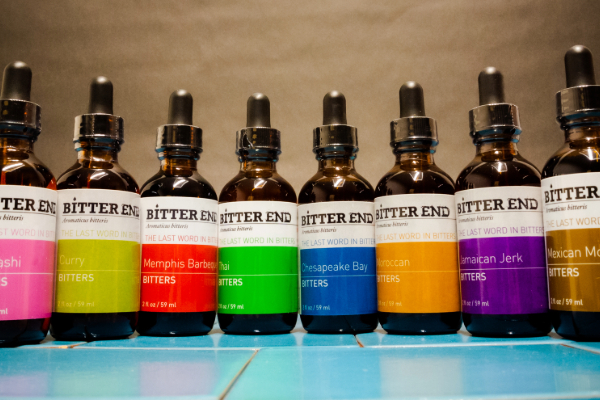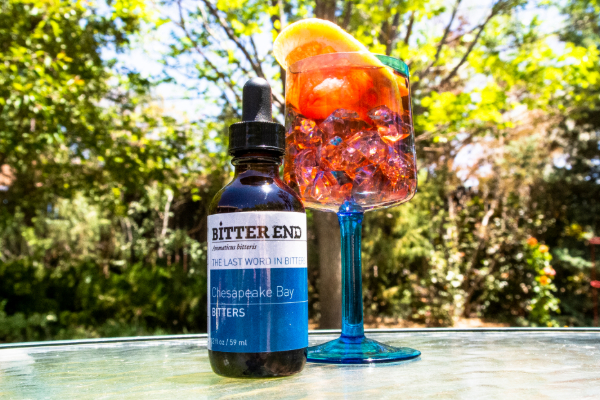
20/02/2025 Molly Bradbury, Principal Managing Partner at Bitter End Bitters, shares insights on bold flavors, innovative uses, and the evolving role of bitters in mixology
Since 2010, Bitter End Bitters has been at the forefront of bold, globally inspired cocktail flavorings. Known for its fiery spice blends and culinary-driven approach, the brand has carved a niche in the bitters market with flavors like Jamaican Jerk, Memphis Barbecue, and the all-new Togarashi. In this interview with the Bartender Spirits Awards, Molly Bradbury, Principal Managing Partner of Bitter End Bitters, shares insights into the brand’s small-batch production process, the growing role of spice in cocktails, and how bitters are shaping the future of mixology. She also offers a glimpse into upcoming innovations and creative ways bartenders can experiment with bitters.
Also read: A Guide to Bitters and Its Types
What inspired the creation of Bitter End Bitters, and how did the brand come to life?
Bitter End Bitters was founded in 2010 by Bill York, who drew inspiration from global spice blends to create uniquely complex flavors. Each blend featured a distinctive spicy heat, incorporating chiles such as cayenne, Thai chile, chipotle, and habanero. At the time, spicy bitters were virtually unheard of in the market, and this innovative approach helped set the brand apart and establish its presence.
Your bitters are known for their bold, globally inspired flavors—how do you decide on new flavor profiles?
When developing new flavor profiles, inspiration often comes from revisiting food trends that gained popularity five to eight years ago. Since trends tend to be cyclical, this approach allows me to anticipate which flavors will be on the rise. By carefully timing each release, I can introduce new bitters that align with emerging trends about a year before they fully take off.
Can you share insights into your small-batch production process and what sets your bitters apart from others on the market?
Working in small batches allows me to engage closely with each ingredient throughout the production process. I visually inspect, smell, and feel each chile pepper, gaining a deeper understanding of its quality beyond just logging a batch number. This hands-on, sensory-driven approach is the most gratifying part of production, ensuring that every batch maintains its intended complexity and balance. While many bitters producers take great care in their craft—even at larger scales—small-batch production demands a heightened level of attention. This shared dedication to quality is what fosters a strong sense of camaraderie among bitters makers.
Heat and spice play a significant role in your bitters—how do you balance these elements to enhance, rather than overpower, a cocktail?
While our bitters have a bold spice on their own, that intensity mellows significantly once mixed into a cocktail. It's similar to how cayenne or paprika is used in cooking—just a small amount can enhance the sweetness of a tomato sauce or deepen the umami of a roast. In the same way, the chile in our bitters awakens the palate and helps unify the flavors in a cocktail, creating a more balanced and dynamic drinking experience.
Are there particular spirits or cocktail styles that pair best with Bitter End Bitters?
With a diverse range of eight flavors, Bitter End Bitters can complement virtually any spirit. For aged spirits like whiskey, Scotch, rum, tequila, and mezcal, I often reach for our Mexican Mole, Chesapeake Bay, Jamaican Jerk, or Memphis Barbecue bitters, as their deep, smoky, and spiced profiles enhance the richness of these spirits. For clear spirits, such as gin or vodka, the brighter, more aromatic flavors of our Thai, Curry, Moroccan, and Togarashi bitters create a perfect balance, adding complexity without overwhelming the drink.

Image: Bitter End Bitters Flavor Range
Have you noticed any emerging flavor trends in the cocktail industry that align with your approach?
I've noticed a growing trend of bartenders taking a more culinary approach to cocktail creation. Savory cocktails are becoming increasingly popular—where once umami and salinity were mostly found in a Bloody Mary or Dirty Martini, they’re now appearing in a wider range of drinks. Bartenders are embracing the full spice rack behind the bar, incorporating bold, complex flavors into their menus. Bitter End Bitters aligns perfectly with this movement, offering a way to introduce depth and spice in a balanced, intentional way.
Many bartenders are experimenting with low-ABV and non-alcoholic cocktails—how do you see your bitters fitting into this movement?
Bitters play a valuable role in low-ABV and non-alcoholic cocktails by delivering intense flavor without adding significant alcohol content. Despite being 45% ABV, Bitter End Bitters are highly concentrated, meaning only a few drops are needed to make an impact, keeping the overall alcohol level minimal. They also help create well-balanced low- and no-proof cocktails that don’t rely solely on sugar and acid, adding depth, spice, and complexity to the drink without overpowering it.
Also read: The Bitter Truth
What are some of the most creative ways you’ve seen bartenders use Bitter End Bitters in their drinks?
Sokhang Pan and his team have crafted an outstanding bar program for Milk of the Poppy, a new bar opening in Santa Fe, New Mexico, this spring. One of the most exciting innovations I’ve seen from him is his experimentation with barrel-aged bitters, which has yielded spectacular results, adding depth and complexity to his cocktails. Beyond traditional uses, bartenders have found incredibly inventive ways to incorporate Bitter End Bitters. I’ve seen them infused into foams for added aromatics, dropped onto dehydrated garnishes to enhance both presentation and flavor, and even used as a flavor base for rock candy rimming sugar, bringing a unique and unexpected twist to cocktails.
[[relatedPurchasesItems-31]]
With the growing interest in craft cocktails, have you noticed a shift in how bartenders and consumers perceive bitters?
Bartenders have long regarded bitters as an essential seasoning element behind the bar. While classic aromatic and orange bitters remain staples, it's now common to see a variety of unique and unconventional bitters featured in signature cocktails. Consumers, too, are becoming more aware of bitters, spotting them on liquor store shelves and in their favorite drinks at bars. As home cocktail culture grows, bitters collections are becoming a key feature of home bar setups. Specialty stores like Bitters & Bottles in South San Francisco and The Bitters Lab in Melbourne, Australia, cater directly to this rising interest, offering a curated selection for both professionals and enthusiasts.

Image: Bitter End Bitters Chesapeake Bay Bitters
Are there any markets or regions where you’re seeing increased demand for unique bitters?
There’s been a noticeable rise in demand for bitters among home bartenders, which has led to expanded availability in retail outlets. While bitters were once primarily found in liquor stores, they’re now increasingly stocked by specialty shops and gift retailers. This shift reflects their growing appeal beyond professional bartenders—bitters make fantastic gifts for cocktail enthusiasts looking to elevate their home bar setups. As more people experiment with craft cocktails at home, the demand for unique and innovative bitters continues to grow.
Are there any new flavors or product innovations in the works for Bitter End Bitters?
I’m currently in the research and development phase for a couple of exciting Bitter End projects, with plans to announce them in the summer of 2026.
What advice would you give bartenders who want to experiment with using bitters in more unconventional ways?
Trust your palate. The more complex the flavor profile of a bitter, the more versatility it offers. For example, our Memphis Barbeque bitters can be used in a citrus-forward cocktail to balance acidity with an earthy depth, while in a Bloody Mary, it enhances the umami of the tomato and adds a rich, sweet-smoke note from the chipotle. The key is to experiment with contrasts and complements—bitters are a powerful tool for creating balance and depth in cocktails. Don’t be afraid to think outside the glass and explore how they can elevate unexpected flavor pairings.
How do you see the role of bitters evolving in modern mixology over the next few years?
As younger bartenders step into management roles, I anticipate a shift toward more inventive and boundary-pushing cocktail programs, moving beyond the recent trend of simply riffing on the classics. This evolution should create new opportunities for bitters to be used in unexpected and creative ways—perhaps even as a starting point for cocktail experimentation. With bartenders embracing a more culinary approach to mixology, I see bitters playing a larger role in crafting layered, dynamic flavor experiences that go beyond traditional applications.
Header image sourced from Molly Bradbury
Related Links
The Future of Cocktails: Top Mixology Trends Shaping 2025
Balancing Art and Substance: Carlo Insonne Talks Innovation and Sustainability in Bartending



